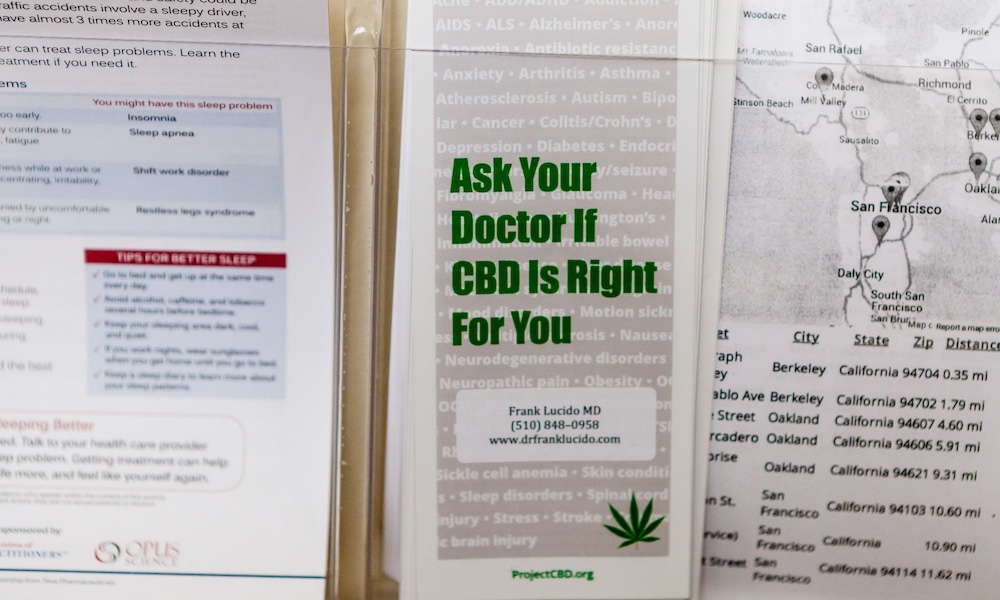
Medical
Americans Are Curious About Whether Pot Actually Kills Pain
New poll shows people are looking to marijuana as an alternative for pain killers.
Americans are curious. Not about anything like what made camel wrestling such a popular Turkish pastime, or the reason the Tidong Tribe of Borneo prohibits married couples from using the bathroom for three days. They are not even moved, not really, to understand the logic behind the hanging coffins in the Philippines or just how cow jumping became a fan-favorite among Ethiopians in the realm of organized sports.
No, none of these bizarre, tidbits of our global culture seems to pique their interest. OK, well, maybe a little. How the Turks expect to beat a large, wild animal that spits and bites in a bare knuckle brawl, is beyond us. But, what the U.S. population is really interested in learning more about is whether marijuana or any of its trend-setting derivatives actually has enough painkilling power to take the place of opioids.
It makes perfect sense, too, that the efficacy of medical marijuana as a pain reliever would be called into question. For the past couple of years, Americans have been sold a borderline schizophrenic line of media swill that either indicates the cannabis plant is a miracle cure for all sorts of wicked disease or just another inebriating substance put here to help humankind forget just how devastating life can be.
Either way, it works for us.
But, according to a brand spanking new national poll from the American Society of Anesthesiologists (ASA), a vast majority of the U.S. population (75%) now wants some answers with respect to the question of whether cannabinoids are genuinely able to reduce pain safely and with fewer side effects than prescription painkillers. The rundown of these findings is as follows:
Two-thirds of those surveyed admit that medical marijuana would be their go-to for pain management if there were any definitive proof that it worked. And that quest for canna-knowledge is more prevalent in Millennials, the survey finds. Around 75% of this demographic said they want a better understanding of how cannabinoids can snuff out pain. Some of them, about 37%, told pollsters that they have even tried medical marijuana to see if it would help them find relief.
Generation X and baby boomers also have a desire to learn the truth about cannabinoids and pain. Two-thirds of them say they would like to see answers to the marijuana opioid equation. About a quarter of them say they have already tried marijuana at some point or another to see for themselves.
Americans are curious about cannabinoids. And rightfully so.
In 2014, a study from the folks at the University of Pennsylvania showed a reduction in opioid overdose deaths in states that have legalized the leaf for medical purposes. The research carried enough momentum that some states are now allowing pain patients to use marijuana as an alternative to opioids.
But a more recent study finds that perhaps the cannabis community got a bit overzealous when pushing the study results from 2014. Using the exact same methods as Penn’s review, scientists at Stanford University have determined that the opioid problem actually got worse in states where marijuana was made legal. And the hits keep on coming. Now, it seems that almost every week, a conflicting study emerges showing that marijuana either reduces opioid consumption or contributes to the scourge.
Since marijuana remains illegal in the eyes of the federal government, putting this puzzle together in a manner that can be seen clearly by the nation, as a whole, is no easy task. We had hoped that since the Canadian government ended pot prohibition last year that researchers there would start digging into this mess eventually. But it seems that even the scientific minds of the northern nation are still having trouble cutting through the red tape required to examine cannabis more closely.
So, we wait.
Unfortunately, while the cannabis advocacy community hangs around for more conclusive answers to the marijuana opioid debacle, the average American is out there flying blind. The poll shows that nearly 50% believe they know exactly what they are getting from the pot products they purchase. This is especially true with regards to hemp-derived CBD, which can now be bought almost anywhere in the nation from smoke shops to convenience stores. Many of them (40%) believe that the U.S. Food and Drug Administration has given these products its seal of approval, clearing them as a treatment for all the ailments that the pot advocacy crew continues to push every chance it gets. This has health experts concerned that pain patients might be putting themselves at risk for a variety of side effects, up to and including liver damage.
“As experts in managing pain, physician anesthesiologists are concerned about the lack of research regarding the safety and effectiveness of marijuana and cannabinoids,” said ASA President Linda J. Mason, M.D., FASA. “The good news is that until the research is completed and we fully understand the risks and potential benefits, physician anesthesiologists today can develop a personalized plan for patients’ pain drawing from effective alternatives such as non-opioid medications and other therapies, including injections, nerve blocks, physical therapy, radio waves and spinal cord stimulation.”
There is a chance that medical marijuana research could experience a boost across the United States in the future. The Drug Enforcement Administration (DEA) just announced plans to license more cultivators to grow research-grade marijuana. For years, the federal government has only allowed the University of Mississippi to tackle the cannabis aspect of its drug study repertoire. This has led to issues with supply and quality that continues to hinder marijuana research to this day. So, at face value, the DEA’s decision to finally make a move toward improving medical marijuana research is promising. But the agency has not yet provided a timeline for the long-awaited expansion, meaning that it could still be years before American scientists are given the tools necessary to investigate the therapeutic properties of the cannabis plant.
Until then… we wait.
TELL US, do you use cannabis for pain?























